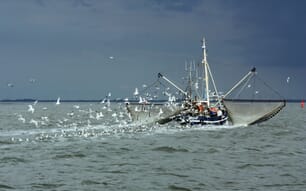Each year, IMARES staff contributes to the process that results in this advice. This varies from taking samples of fish landed, or on board a commercial vessel, carrying out research surveys up to collating this information into a fish stock assessment that often serves as the basis for catch advice.
Maximum sustainable yield
As of this year ICES gives advice based on the MSY (Maximum Sustainable Yield) principle. The aim is that from 2015 onwards all fish stocks will be managed at a level that allows maximum sustainable yield to be achieved. For a number of fish stocks, this first means that fishing intensity must gradually be reduced. For those fish stocks where sustainable long-term management plans are already in place, the TACs (Total Allowable Catch) under these plans are taken into consideration too. The table below provides an overview of the catch advice on the basis of the MSY principle and the management plans for the various pelagic fish stocks.
The ICES assessments for the pelagic fish stocks most important to the Netherlands are summarized below.
North Sea herring
After recovering at the start of this century, the herring stock has declined again after 2004, due to low numbers of young herring joining the population. While it is true that each year many herring larvae are born, only a small number of them survive. This might be due to changes in the marine environment and its consequences for the main food source of herring, zooplankton. The reduction in fishing intensity has led to a stabilisation of the adult herring stock at about 1.29 million tonnes.
Blue whiting
During the last 6 years the stock has declined, due to high fishing intensity and low number of blue whiting recruits. In comparison to 2009, the spawning biomass continued to decline to approximately 1.3 million tonnes at the beginning of 2010. In order to comply with the management plan, it has been agreed between the EU and the Coastal States that fishing intensity has to be reduced.
Mackerel
The mackerel stock has extended considerably in recent years. Both the quantity of mackerel and the area in which they are found has increased. In recent years, more mackerel has been found in northern waters. The mackerel spawning stock biomass has been estimated at about 3 million tonnes in 2009 and 2010. This is higher than the historic level during the 1980s/1990s. For mackerel too, an international management plan has been agreed by the ‘Coastal States’.
Horse mackerel
Horse mackerel is mainly caught in ‘western waters’ and to a lesser extend in the North Sea. A horse mackerel egg survey was carried out in 2010 in order to determine the spawning stock biomass in western waters. The new data from this survey, which is carried out once every 3 years, plays a major role in determining the management plan for horse mackerel. The new estimates of spawning stock biomass are at approximately the same level as last year.
Norwegian spring spawning herring
Norwegian spring spawning herring is caught in the Norwegian sea. After the collapse of this fish stock in the 1970s and 1980s, this herring stock has recovered considerably, due to a number of strong incoming year classes and low fishing intensity. In 2010, the spawning stock biomass was estimated to be about 9 million tonnes. This makes the Norwegian spring spawning herring stock the largest herring stock in the world. The lack of incoming strong year classes is the reason why a slight decline in the stock level was observed in 2010. An international management plan is in place for this stock.
Follow-up
The EU member states will discuss the ICES advice with the fisheries sector and NGO’s. In November 2010, the European Commission will consult the industry and NGO’s and will submit a proposal for the catch options in 2011. As these stocks are jointly managed, the EU together with Norway, have to agree on the total allowable catches for these pelagic stocks. The first discussions will take place in November. In December 2010, the European council of fish ministers will decide on the catch quotas for 2011.
Catch Advice For Pelagic Species 2011
THE NETHERLANDS - Mackerel, North Sea herring and Norwegian spring spawning herring in the Norwegian sea are all doing well. However, blue whiting is doing not so well, as its biomass is declining, according to the advice on catches for 2011 published by the International Council for the Exploration of the Sea (ICES).

